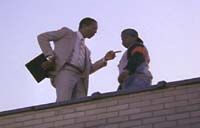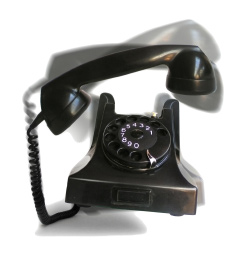It’s so easy to say that employees should just go away when they’re not performing the way we want them to or responding to our management. The hard part is not actually getting them to change behavior, it’s actually admitting that we can do more to get them to where they should be.
 PIPs or Performance Improvement Plans are often used by companies as the last ditched effort to shape up those “troubled” employees before we ship them out. Others use them as merely a coaching tool to get the attention of their people so that other forms of disciplinary action doesn’t have to be taken. I’ve seen PIPs in memo form, worksheets and templates, and I’ve even seen them delivered in emails. But regardless of how we format them, they should all have the same elements to be effective:
PIPs or Performance Improvement Plans are often used by companies as the last ditched effort to shape up those “troubled” employees before we ship them out. Others use them as merely a coaching tool to get the attention of their people so that other forms of disciplinary action doesn’t have to be taken. I’ve seen PIPs in memo form, worksheets and templates, and I’ve even seen them delivered in emails. But regardless of how we format them, they should all have the same elements to be effective:
- Clear areas that our employees need improve upon to remain a part of our teams
- Challenging, yet achievable goals and deadlines for expected improvement
- A plan of action for achievable said goals
- Steps in which the manager can contribute and help the employee reach optimal performance
- Fair and consistently applied actions that will occur if the desired performance isn’t met
We cannot use the word “Improvement” in the plan if we are not truly trying to achieve it. How we communicate during the delivery, and the words and tone used during the meeting should not feel like a death sentence or as if we are setting the employee up to fail.
There is no need to rehash the issues that we’ve had with the employee, but should focus on the behaviors that cause those issues that need to be altered or adjusted. Bringing up old stuff, especially if those incidents have caused negative conflict before, will surely turn your performance improvement meeting into a counter-productive blame session where no one is listening.
If we want our employees to listen, they must feel as if they are believed in, like they can make it and that they are being supported by members of management. Not only is this communicated in the document and meetings themselves, but by actually following up frequently to ensure that the necessary steps in the plan are being acted on.
So ultimately, a lot of the responsibility comes back to the manager. Not just delivering a document so that we can check a box, but managing our employees to yield the results that we need.
And isn’t that what management is all about? Not just supervising processes and expecting everyone to fall in line, but by providing resources and teaching people how to be successful in our systems.
 If we want to get rid of someone, let’s just do it and move on to the next. Like Joe Clark said in the movie Lean On Me, “Don’t f#&% around with it…do it expeditiously!” But if we actually want them to get better, we must communicate it, make them believe it and show them how serious we are about them making it through the process.
If we want to get rid of someone, let’s just do it and move on to the next. Like Joe Clark said in the movie Lean On Me, “Don’t f#&% around with it…do it expeditiously!” But if we actually want them to get better, we must communicate it, make them believe it and show them how serious we are about them making it through the process.





 It’s the little things that make huge differences and it’s the little things that those in charge do that employees pay the closest attention to. Employees can tell when their managers don’t have their back, and more importantly they know if they’re being used or undervalued. Once these trusts are damaged, it’s very difficult to regain them.
It’s the little things that make huge differences and it’s the little things that those in charge do that employees pay the closest attention to. Employees can tell when their managers don’t have their back, and more importantly they know if they’re being used or undervalued. Once these trusts are damaged, it’s very difficult to regain them.